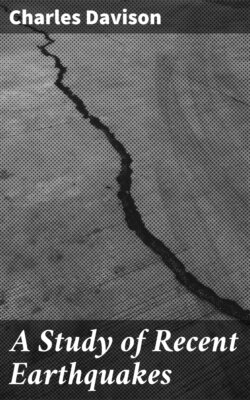Читать книгу A Study of Recent Earthquakes - Charles Davison - Страница 32
На сайте Литреса книга снята с продажи.
POSITION OF THE EPICENTRE.
ОглавлениеIn determining the position of the epicentre, Mallet's method was closely followed. Fissures in buildings were used for the most part, in two out of every three cases; and occasional measurements were made from objects overthrown, projected, or shifted, and also from the personal experiences of observers. The attempt to apply the method was, however, fraught with difficulties. The heterogeneous structure of the island was no doubt responsible for many divergent azimuths; the irregularity of the buildings both in form and material and their variety of site furnished other sources of error; even the smallness of the area was a disadvantage in lessening the number of trustworthy records.
Measurements were made at 55 places altogether, but in most cases they were the results of isolated observations, not the means of several at each place. On this account, I have not reproduced in Fig. 15 the azimuths shown in Dr. Johnston-Lavis's map of the earthquake. A large number of them clearly converge towards an area lying to the west of Casamicciola; and, from their arrangement, Dr. Johnston-Lavis concludes, though the evidence does not seem to me quite strong enough for the purpose, that they emanated from a fracture running from a little west of north to a little east of south.
This conclusion is, however, justified by other evidence. In the centre of the injured district, Dr. Johnston-Lavis has traced a meizoseismal band, in which the shock must have been nearly or quite vertical. "The damage inflicted on buildings included within this band was," he says, "very characteristic of the nature of the shock; the walls having received but slight injury, whilst almost every floor and ceiling had been totally destroyed. In fact," he adds, "many houses would have required no other repairs than the replacing of the divisions between the different storeys." The shaded central area in Fig. 15 represents this band, passing in a nearly north and south direction from a point midway between Campo and the upper part of Lacco on the north, through the west part of Casamenella and Campo, to a point near Frasso on the south; the length of the band being thus about two-thirds of a mile.
If the central line of this band is produced towards the south, as indicated by the dotted line, it grazes the west side of Fontana, where, as we have seen, there was a second meizoseismal area, much smaller than the other and surrounded by a district in which houses were almost uninjured. That the shock in this town was vertical or nearly so, is shown by the nature of the damage (p. 52) and also by the testimony of the inhabitants. I will give Dr. Johnston-Lavis's explanation of this detached meizoseismal area when discussing the origin of the Ischian earthquakes; but the evidence seems to me to favour either the existence of two distinct foci or, more probably perhaps, the extension of the fissure to the south with an increased impulse beneath the centre of Epomeo.
